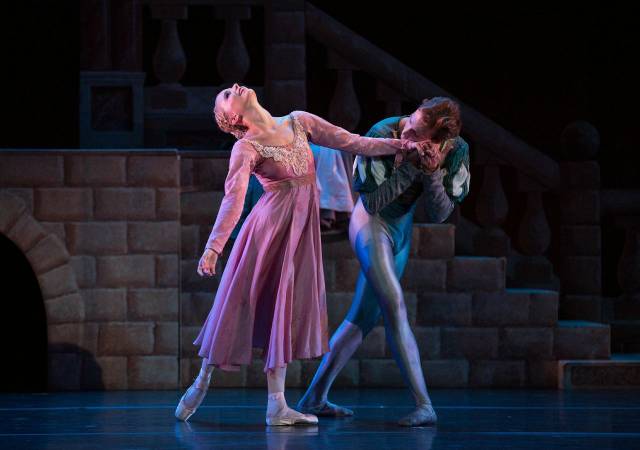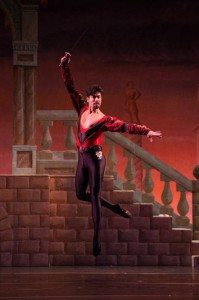

Dances Patrelle is celebrating their 25th anniversary by reviving choreographer Francis Patrelle’s fifteen-year-old production of Romeo and Juliet. Running from September 11-14 in the company’s home theater, the Kaye Playhouse at Hunter College, the ballet was welcomed with warm hearts on opening night.
Originally, Patrelle was commissioned by Madeline Cantarella Culpo for the Berkshire Ballet in 1982 when he began creating this original work unidentified with the 1930’s production choreographed by Ivo Váňa Psota and later incarnations of the ballet. The Dances Patrelle’s production takes on a classical style with hints of modern vocabulary and is rooted in the time-honored experience of Shakespearean drama. For this restaging, native New Yorkers Alexander Castillo and Chloe Sherman travel from the Los Angeles Ballet to perform the roles of Romeo and Juliet. This pair of star-crossed lovers is the perfect two for Francis’s dramatic ballet. Both Castillo and Sherman have danced in Patrelle's The Yorkville Nutcracker as children and are now returning to Dances Patrelle as professional dancers.
The audience may find quietude in the duets performed by Castillo and Sherman as they luxuriously swim through the air of the stage. Patrelle creates a sense of distance as well as intimacy in the pas de deux. Energy lingers and magnetism drives through the space as the dancers glide across the stage. The two, dancing as one, become wrapped and layered in various lithesome lifts. Moments of a slight hand touch are a remnant of exciting new love and the innocence of a fresh relationship. When, at other times, arms rise in a subtle port de bras, we see a stretched reach reminding us of the barriers that exist between the two young lovers and a love that will break through them.

The audience may not be at the edge of their seats, even if appreciating Patrelle’s deep love for dramatic ballet and classical theater. With gentle articulation of iconic moments, the full-length ballet is conservatively characterized. Portrayals become concerned with Shakespearean conventionality at the risk of being cursory. However, Patrelle does create instances of newness within his traditional storytelling method. A pleasant mandolin dance provides respite from the battles of households. Here, the line between Capulet and Montague are blurred for a moment forwarding the hope of eventual peace between the families. Another unique addition is the inclusion of “Phantom” characters, children from the chorus of “Plague Victims” and “Street Urchins” who at times seem to flood the stage inviting death, at other times portraying death itself. They are the presenters of tragic themes by way of modern movement. Lastly, the final moments of the ballet’s ending are particularly comforting. The characters cover their distinguishing red or blue costumes with black garments, and the Lords remove their red and blue hats suggesting that in the end, we are all people equally vulnerable to tragedy.
Performances of Romeo and Juliet continue through September 14 at the Kaye Playhouse at Hunter College. For more information and tickets, click here.
Through September 14 at the Kaye Playhouse at Hunter College.